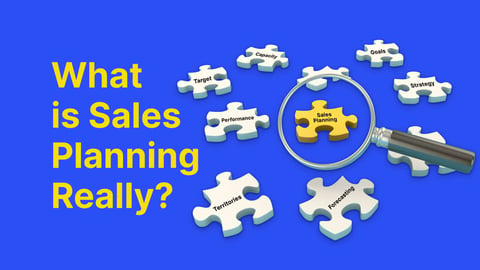The number one focus for leadership continues to be revenue growth. But in an economy fraught with uncertainty and distractions, priorities have shifted. What’s trending when it comes to optimizing sustainable and repeatable revenue growth? Let’s take a look.
What’s In: Data-Driven Strategies
What’s Out: Relying On Instinct
CEOs are prioritizing technology, second only to generating revenue growth. It’s common place to look at technology as a tool for improving productivity. But where it’s really making an impact is on how you create your go-to-market strategies and how confidently you react to market changes.
Why is this important? Now, sales plans can be tested with seller data, rather than relying on the often-competing opinions of sales leaders. You see it in the numbers. 80% of leaders and sales ops professionals say AI has improved the use of seller time. Bringing in an innovation to help solve business problems can challenge status quo. It is a mind shift for some senior leaders, who have built their success on years of experience and knowledge to maximize revenue. The reality is the decisions come from a mix of data and experiences.
What’s In: Keeping it Simple
What’s Out: All-Or-Nothing
That leads us to our next point. A Korn Ferry study indicated that only 20% of sellers are adopting newly deployed sales technology. For an innovative solution to be successful and embraced by all, you need to carefully plan the implementation stage. In a recent episode of What I Wish I Knew, Scott Barton discusses implementation best practices with Rob Blohm, from OpenSymmetry. Rob’s first piece of advice is to stay focused on the business case, from start to finish. This helps your team accurately measure ROI. And it ensures that you’re getting the most out of the technology.
Secondly, keep it simple. It may be tempting to take advantage of all the features, especially tools like AI. However, Rob advises that you should go after those quicker wins at the start. Once the team has experience in the solution, go back and apply the learnings to more complicated use cases.
Watch the full episode of What I Wish I Knew featuring Rob Blohm.
What’s In: Long Term Relationship Building
What’s Out: Prioritizing New Deals
Repeat business is the most profitable and predictable. Satisfied customers have devoted time and effort to learn the ins and outs of your products and services. They appreciate the value you bring to their business. Sellers also put a lot of time and effort into new customer acquisition. Which means they are less likely to give up on a prospect, even when the deal looks unlikely to close. To maximize revenue growth, leadership needs to prioritize a seller’s time. It’s all about balance – and that’s where technology comes to play. A purpose-built sales planning solution uses predictive analytics to highlight a customer’s likelihood to buy and identifies new markets worth pursuing.
What’s In: Upskilling
What’s Out: Manual Mayhem
Here’s a sobering stat – only 46.5% of sellers reached quota in 2022. When sellers can’t hit quota, they tend to look for a new employer. Why aren’t sellers hitting quota? Well, there are a lot of distractions eating into productivity. Sales only spends 28% of their week on selling activities. Manual admin tasks, that can be easily automated with the right technology, are taking up valuable time and resources. Sales leaders also have a lot of distractions, limiting opportunities for mentoring and motivating their team.
Sellers require a plan of action to be successful. They need to understand their quota to achieve it. Hitting a target isn’t easy when you don’t know what you’re aiming for. A purpose-built sales planning solution helps you understand the potential of your accounts and territories. It has tools in place, like dashboards, to help sellers visualize how they can meet, and even exceed, targets. This level of transparency gives sellers a head start. Sales data is a coaching tool. It helps leaders know who and when to mentor, motivate, and upskill.
Design, Amplify and Optimize Your Go-To-Market Strategies
The right tech solution can help you navigate current market disruptions. For more insight into how you can confidently maximize revenue growth, including 5 actions to take for sales leadership success, grab your copy of Martin Fleming’s eBook: Helping Revenue Leaders Drive Growth.




